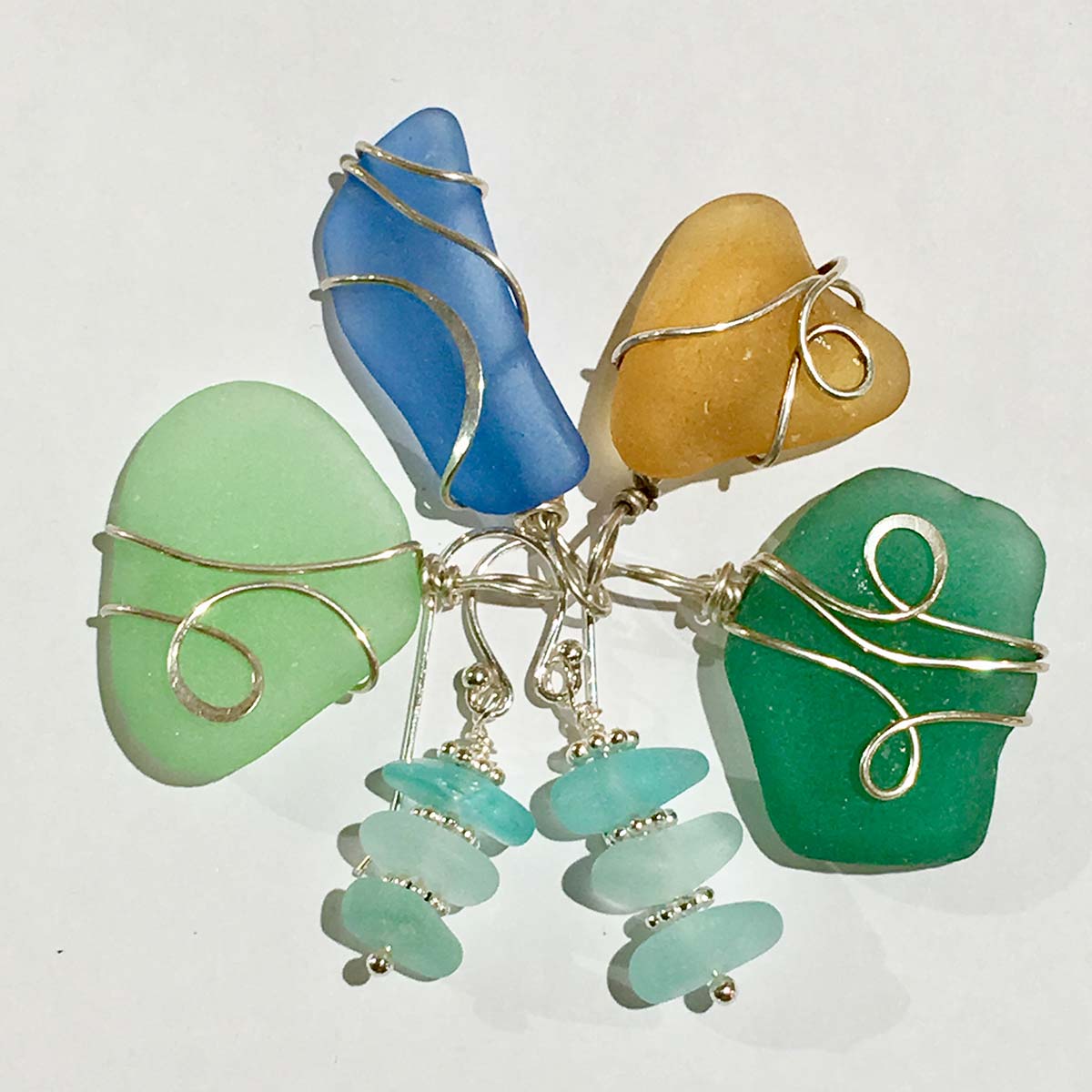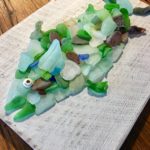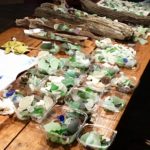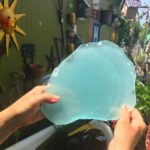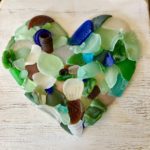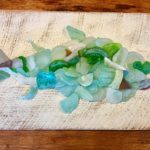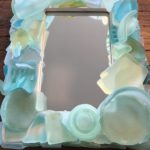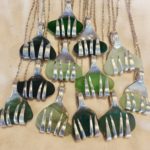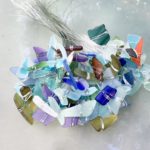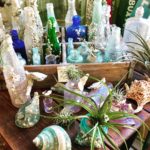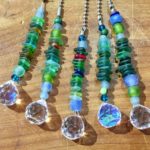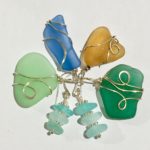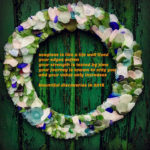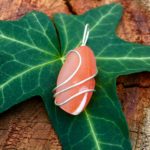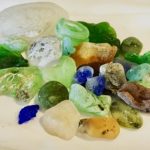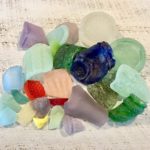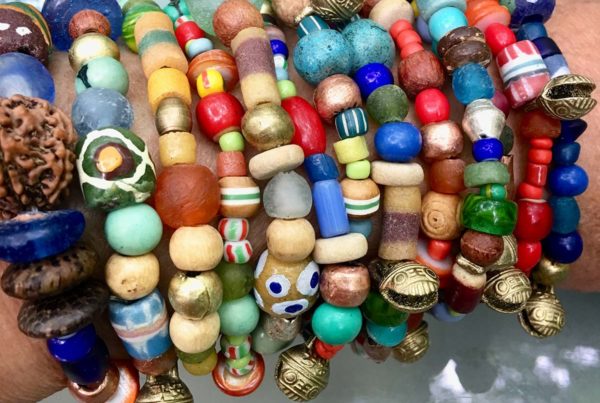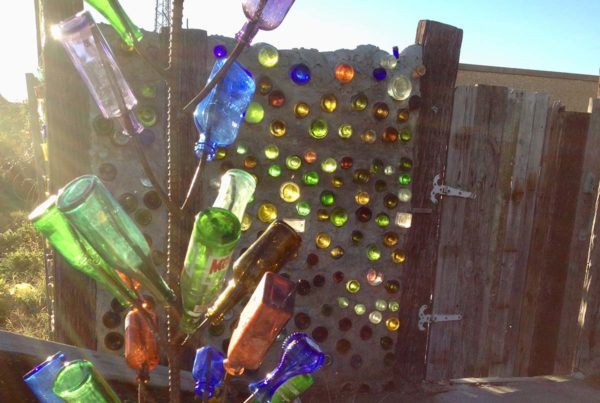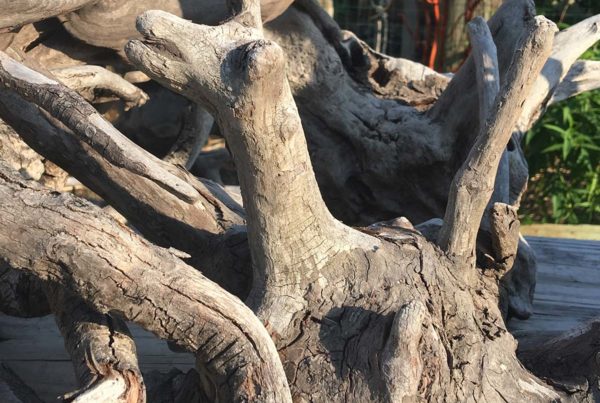Seaglass comes from shipwrecks (if you are very lucky), bonfires, bottles thrown overboard, or even ocean dumping (which many coastal cities did before the practice was halted). There is a hierarchy to seaglass as well, with value depending on thickness, shape, how frosted it is, no nicks or chips, and mostly color. Clear, brown and most greens are the most commonly found seaglass. This color seaglass tends to be thin and not so old. Shades of turquoise are harder to find. They are usually older and more thick with (if you are lucky) raised lettering. Imagine the old coke bottles, medicine bottles even old baking soda bottles… Cobalt and cornflower blue seaglass are from bromo seltzer and milk of magnesia bottles and make for some very pretty jewelry. Very rare red (car tail lights or nautical lamps), purple form WWI era bottles that didn’t have the added manganese bleach agent (which was mined in Germany and thus unavailable). One in 10,000 pieces of seaglass is orange. Seagreen Gallery incorporates seaglass in many of the items it offers for sale – lots of jewelry, chimes, bouquets, wall art on barn wood, key chains, and pieces just off the beach! Locally, the Nellie Myrtle Beachcomber Museum houses one of the fines, largest and quirkiest collections of wonderful beach-walk treasures – all found in nags head in the 30’s, 40’s and ‘50s by Nellie. Imagine shelves of gallon jars filled with seaglass sorted by color. Once bitten by the seaglass bug, search out other collectors on Instagram or Facebook. Some of my favorites are Mary T McCarthey, MOnOpatin, or our local, in lovewithseaglass, with videos of realtime beach discoveries right here in OBX. The Outer Banks, also known as the Graveyard of the Atlantic, produces lots of great seaglass. Other world famous seaglass collecting beaches are Ft Brag in California, Port Townsen near Seattle, the old fort in Puerto Rico, the mudflats of Seaham England (where an 1800’s bottling factory dumped the misfires) and Scottish beaches where ocean garbage dumping produces loads of seaglass. So get out there at low tide, beachwalk, de-stress, commune with the coast. You just might be rewarded with a seaglass hunk .. a chunk of burnin love! Seaglass is like a life well lived
Your edges soften
Your strength is tested by time
Your journey is known to only you
And your value only increases..
The ocean’s low tide offers many wonderful treasures, but among all of the shells and stones, the most precious of all is seaglass. A beach walk is mostly about the journey, but there is something very thrilling about the heart-pounding discovery of a well-rounded, frosty chunk of cobalt seaglass. Find one great piece of seaglass and you are hooked.
